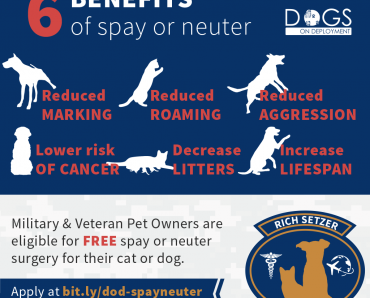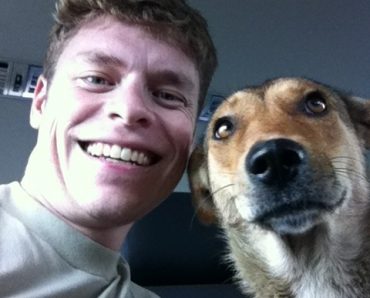
It’s probably not a good idea to upload a picture of your dogs being naughty if you want to find a welcoming foster home, but make sure you disclose potential DoD Boarders of your pet’s problematic behaviors, and tips you use to manage them.
We’ve all heard the saying “a picture is worth a thousand words;†but, when you are faced with separating from a pet to fulfill your service commitment, the right picture can be worth far more. A great pet profile photograph is a critically important step in finding a volunteer who will board your pet while you are deployed.
When you upload a photo of your precious pooch (or cat, bird, or other animal) to the “Pets in Need†section of dogsondeployment.com, using the right picture can find your pet a temporary home quickly and with minimal stress. Conversely, the wrong photo can distract viewers, detract from you pet’s profile, and even derail your search for a boarder home.
When you photograph your pet for a DoD pet profile, keep the following strategies in mind:
 Background
-  Photograph your pet against a simple, colorful background that is not cluttered or distracting. For dogs, an outdoor background of grass or shrubbery works very well. For cats or other pets, a solid colored indoor wall is an excellent choice.

Here is a great example of a simple background, allowing this puppy’s cuteness to shine through the photo.
 Lighting
- Take outdoor photos in an illuminated area out of direct sunlight. Try photographing your pet on a partly cloudy day or in a semi-shaded area. The animal should be positioned so that the light source is behind the photographer.
- Indoors, avoid using a flash, as this can cause your pet’s eyes to have an unnatural red or white glow that is not flattering. Avoid overhead lighting. Indirect lighting is best, with the light source positioned behind the photographer.
Perspective
-  Make your pet the only focus of the photo, and get down on the animal’s level to take the shot. The best picture will focus on your pet’s face. For dogs, you may want to take a photo that captures the face and also shows his/her body next to a simple, identifiable object (e.g. lawn chair, picnic table), to give the viewer a sense of the animal’s proportions.
Handling
-  An animal that is engaged and looks happy or content will be the easiest to place. To ensure you are able to show your pet at his/her best, have someone help you with the photo shoot. While the photographer snaps photos, the other person can stand behind the camera with a squeaky toy to attract the dog’s attention.

This pup gives a big happy smile to its owner in this picture, making this pup look desirable to potential volunteers.
- If possible, try a few minutes of vigorous play or a brisk walk before starting. This will likely get the dog panting, which tends to makes for a happier looking, “smiling†dog.
- For cats, it may be best to take a more relaxed approach, concealing the camera, and engaging the cat with a toy. Cats look great when they are looking at the camera, or when they are focused intently on a toy.

This is a beautiful example of a relaxed cat.
Things to Avoid
-  Don’t unwittingly sabotage your pet’s chances of finding a boarder home. Be sure your pet’s photo shows him or her in the best possible light.

Naughty cats, though cute, are not desirable by DoD Boarders who value their screen doors.
- Don’t photograph your pet doing anything that might be objectionable to someone else (e.g. digging, lying on furniture, inappropriate chewing, etc.)
- Do not photograph your pet in a choke or pinch collar.  Not everyone agrees on the use of these types of collars and we have found that they distract from the issue at hand—matching a pet with a boarder home.
Everyone wants their pet to find the perfect boarding situation, in the absence of their loving home; taking a great picture makes it all that much easier for your pet to look as appealing and adorable to a potential boarder, as he/she does to you, every day.




